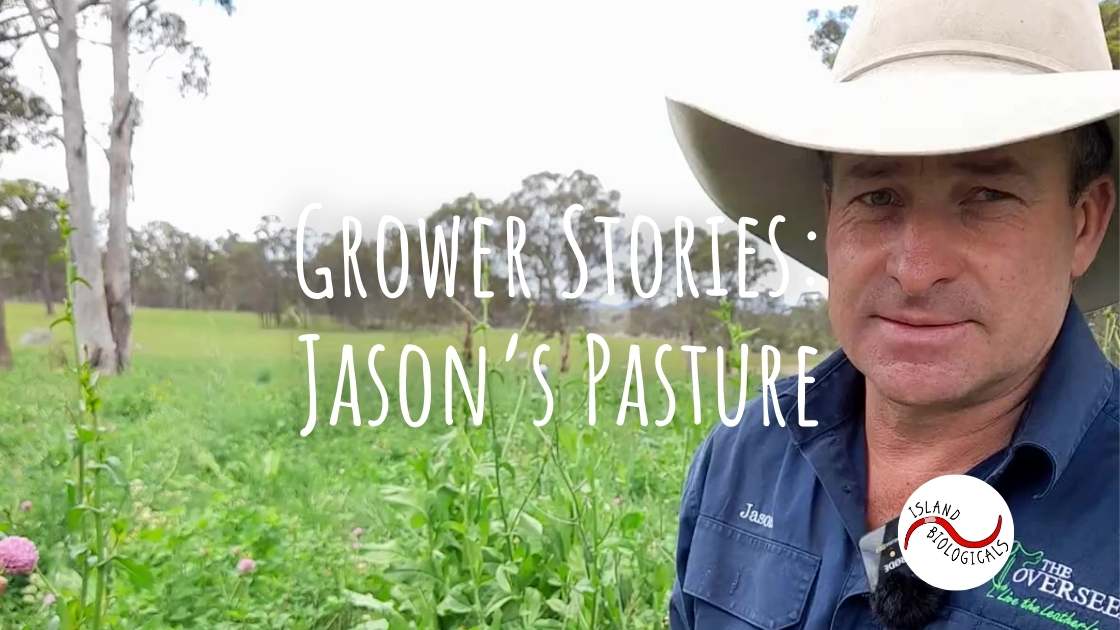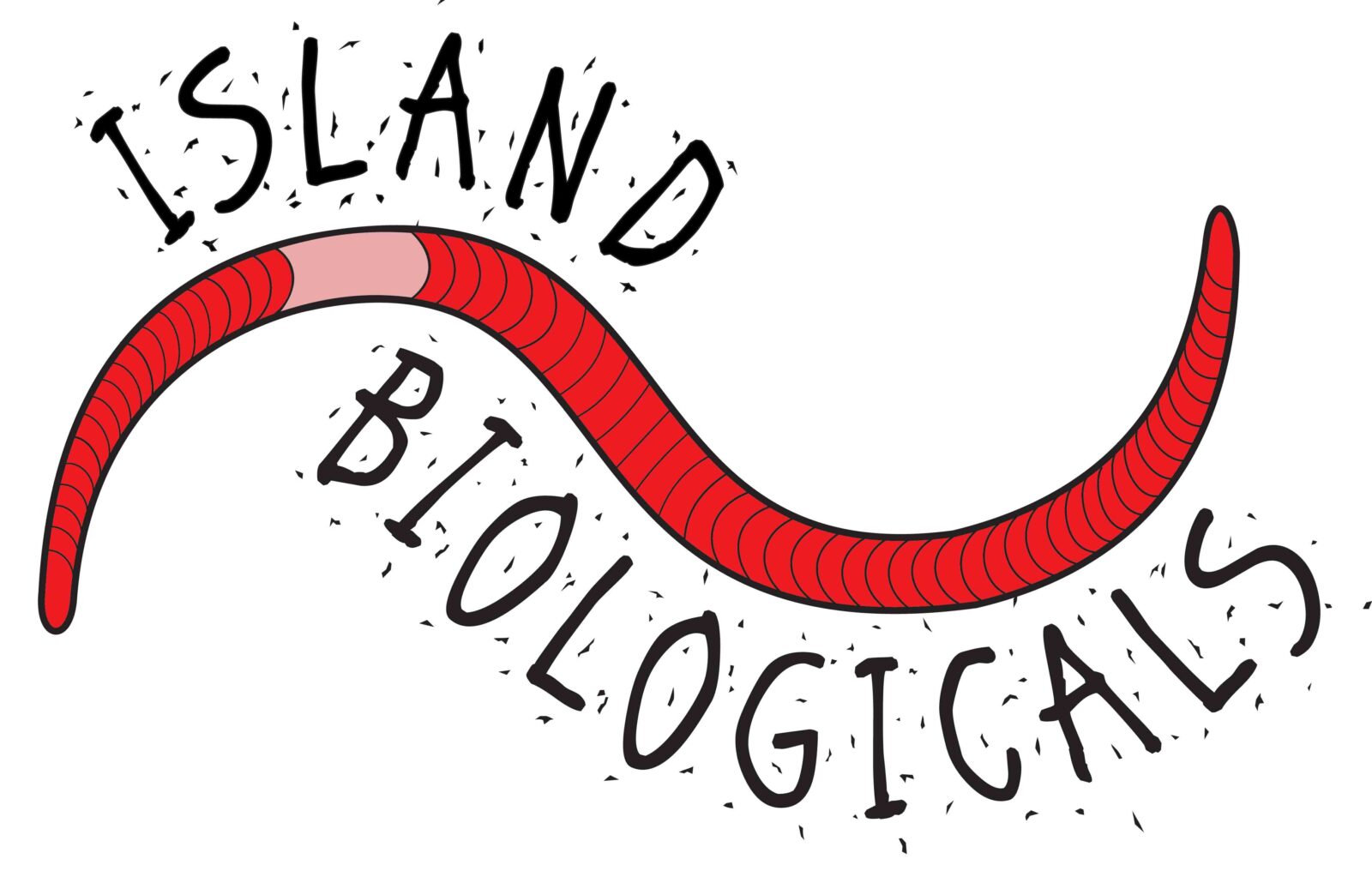Jason Simmons of The Overseer Saddlery at Armidale, NSW, is one of our Biocast stockists. He runs cattle on his 500 acre property, and has been using Biocast since 2017. He predominantly uses it as a seed dressing, and once a year as a foliar spray. Jason has as very strong background in mineral balancing but found that things really kicked off when he added the biology as well.
Here’s a chat that Lee had with Jason about what he’s noticed from using Biocast, and how he’s used it, recorded in November 2023. The transcript is below. You’ll notice that they both share the dry Aussie sense of humour! At the bottom of the page you will find a video from the same day showing how Jason is using Biocast with mineral amendments for a multi species seed mix to improve his poorest paddocks.

A chat with Jason
TRANSCRIPT:
Lee: So Jase just to put you completely on the spot: You’ve been using Biocast here for, well apparently it’s six years, apparently, well it’s probably one before that even, that time that I didn’t meet you, that first time. You have some kind of commitment towards it [as a Biocast stockist], what do you see as different utilising Biocast as to previously?
Jason: I suppose to give you a bit of history, my version, I came into biological farming or regen farming or whatever you want to call it through chemistry. I met Lee after I’d done a lot of chemistry and I didn’t understand the biology side. I was studying biodynamics trying to work out what was the next step for us in learning biology. After I met Lee, I realised that there was a lot more to learn – the more you know the less you realize you have knowledge. So yes, you just continue on learning. So I’ve used Biocast for five years. We originally started with liquid inject. So I had a machine I built and we were putting down some nutrients through a liquid inject system and we ended up then going and putting Biocast through the liquid inject. We put it as a foliar as well. The liquid inject didn’t seem to give us the result. We then went to seed inoculation or seed treatment. So we were we put it directly on to the seeds. We were able to purchase untreated seeds, we put it straight onto the seeds. And it was originally only oats when we were pasture cropping. We weren’t multispecies at that stage. We were putting quite a lot on and I know Lee’s rate now is low to what I was using. I was using 25 L to 1 tonne bag of oats. [We now recommend 5-10L/t)
Lee: You’re right. You’re the first person that I knew doing it. So it was all a bit ‘let’s find out’.
Jason: Yeah, so we shoved it out of a bulker bag through an auger and we were wetting it going into the auger and was coming out pretty covered, but massive result; like we had root systems on oat plants within three days, probably an inch and a half long and fully coated in rhizosphere and, growth from there was just phenomenal. So I learnt more so that it was a fact of putting it on the seed, rather than liquid injecting beside it. It grew with the plant and the plant was protected for the rest of its life. So we went that way. We still do a foliar a year and potentially twice a year. I do either a biological or a biological food, so fish or molasses or something like that up to twice a year depending on season and it’s more a feel rather than a date. If the seasons right, it feels right, let’s go. So there is no date that is the right date.
Lee: No, I fully agree with that.
Jason: So we’ve used other products and stuff. But I think with Lee’s product, and we’ve had the discussion for many years: ‘Is it live or is it signal?’ It’s both. And it’s the conditions! So you can’t put it on gravel and expect it to work.
Lee: [joking] so you get a bigger driveway.
Jason: Yeah. So the plants seem to, we’ve got life and vigour back in our farm. And you know Lee and I have just been driving around and discussing that there is life and vigour left in our farm and when you look at the neighbours it just looks like death, an anaemic green.
Lee: Yeah not a good death, it’s slow.
Jason: Yeah it’s a slow death. Our green is extraordinary compared to the neighbours. [Joking] It obviously rains right up to the fence.
Lee: They were pretty efficient looking fences, I can imagine if a shower got up to that it’s not going to escape!
Jason: no there’s the odd Clover plant that does escape through the fence to the neighbours but they don’t last very long. So yeah, it does always rain more here and as customers come to the saddlery it is “you’ve had more rain than the neighbours, obviously”.
Lee: Also I noticed at one of those boundary fences the love grass doesn’t seem to be able to get through the fence.
Jason: No, no the seeds of the love grass must be bigger, and they can’t fit through the fence.
Lee: Yeah that’s lucky for you, cos they’d take over your whole place.
Jason: Yeah. Next door is some is fairly thick with love grass. And yes, it’s it’s not… well we set the condition for what we want to grow not what we don’t want. So it’s setting conditions and those conditions include chemistry, it includes biology, includes grazing, it includes all those things. But you know as far as Biocast, I reckon that it has been a turning point for us because our soils were very low. But with the stimulation of biology in the right time and the right seasons we are continuing to grow. We’re not a summer dominant pasture anymore. So we would have nothing green in the winter, which meant our biology weren’t being fed. We now have green growing plants all year round. And it just continues on, the biology survive all year and they just grow bigger and bigger and better and better. More is more.
Lee: And somehow it seems to grow soil. More is more, I read that somewhere [it was on our blog ‘Get more with multi species’ that was released just before this chat.]
Jason: So yeah, apparently that’s the go, more is more.
Lee: that growing of the soil, it’s just an endless… If you stopped that then suddenly you’re depleting it, it’s stopped growing the soil.
Jason: Yes. The growing of the soil is growing in depth, it’s growing diversity, it’s growing carbon, it’s all those things. So the bigger the soil you have, and through the chemistry side if you sit there and study the isolation of chemistry only, you can build a perfect soil test. But what we’re after is a soil that’s interacting with plants, organic matter, biology, and there’s a storage of nutrient within all that. The mineral cycle is far bigger than the cycle that we test when we test soils.
Lee: Yeah, absolutely.
Jason: So as we grow, we grow all those things and they becomes buffers and organic matter that buffers things and it stores its own material or minerals. Biology store their own. There is the store and the chemistry of the of the soil particles, all that stuff, the cations that are there. So as we grow, we need more and more. You add more and more and keep more and more and grow more and more and you become productive. The cows get fatter and heavier.
